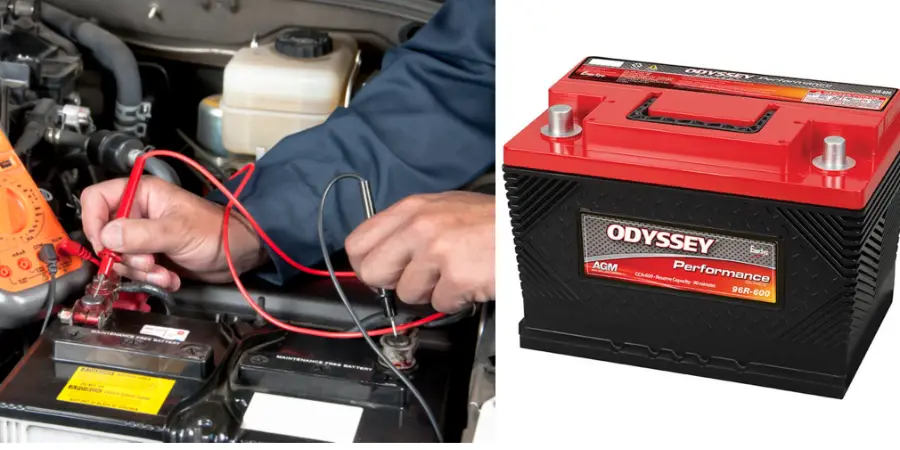
Did your 96R die, or are you looking for something new to put under the hood? A 96R is a typical battery found in vehicles, but many drivers and mechanics choose to switch them out depending on their preferences. There are lots of alternatives, but three stand out.
An AGM, GEL, or SLA battery is an excellent alternative to a 96R battery. It’s essential to consider your car’s setup to make sure all is compatible before purchasing a new battery. Additionally, you’ll want to discuss with a mechanic whether or not a switch-out is possible.
Below, I’ll explain what a 96R battery is and its various benefits. Then, I’ll walk you through three common replacements for the 96R. I’ll wrap up with essential considerations for changing out your battery.
The 96R Battery Explained
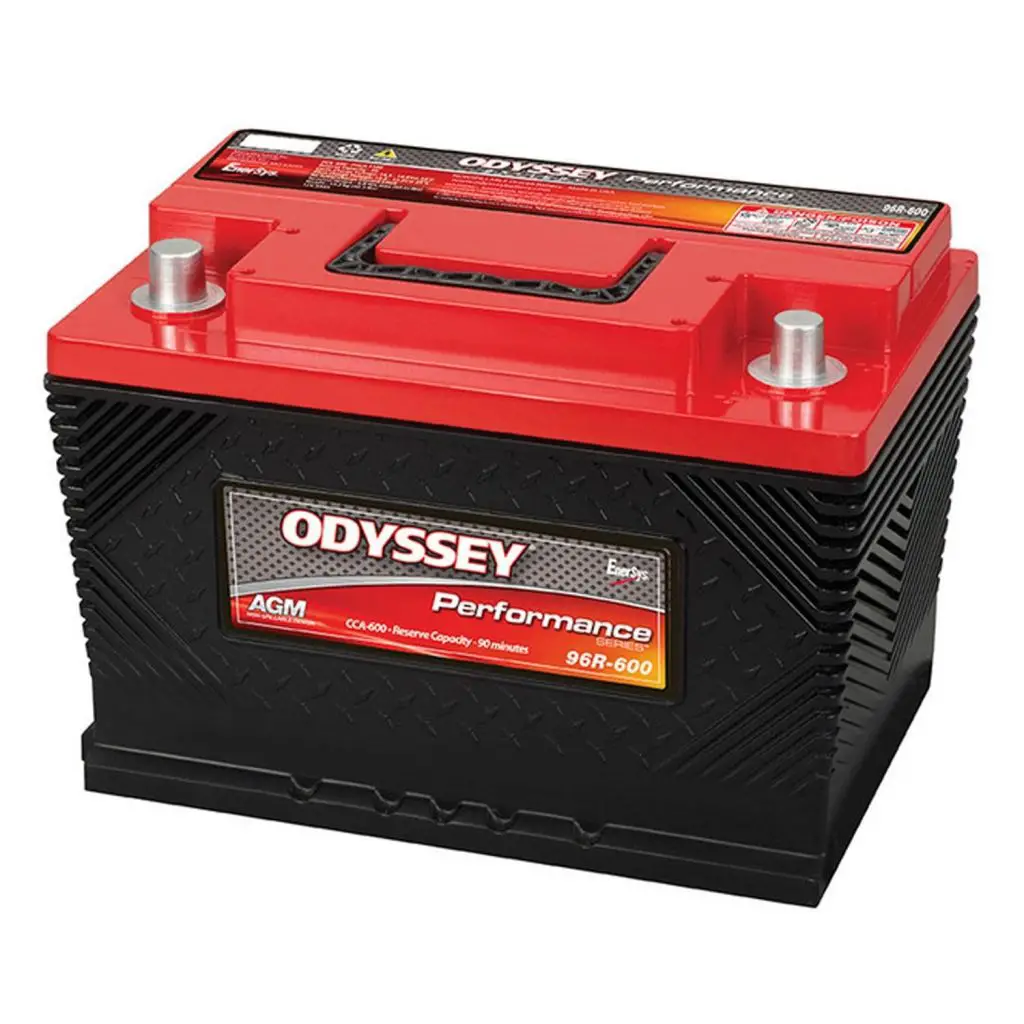
A 96R battery is a lead acid automotive battery designed to provide higher cold cranking amps than typical batteries of similar size. It is commonly used in cars, trucks, and SUVs.
It’s important to remember that 96R is just a type of battery, too, not a brand, in the same way a cheeseburger from a fast-food restaurant and a cheeseburger made at home are both burgers, but different still. Many different battery brands have different versions of a 96R, but the term 96R refers only to the type, not the manufacturer or its features.
This battery stands out from other batteries for a few reasons. The 96R battery is a typical lead-acid battery used in many vehicles, so many cars will start with this type of battery.
It is a 12-volt, “maintenance-free battery” (though it’ll still require typical maintenance and replacements) that lasts much longer than traditional lead-acid batteries. It is commonly used in cars, trucks, SUVs, and other vehicles.
Additionally, the 96R battery is designed to provide reliable power for extended periods, making it a powerful starter battery.
It features advanced technology that helps to prevent sulfation, which is a build-up of lead sulfate crystals on the battery plates. This build-up can reduce battery performance and cause premature failure.
The 96R battery also utilizes a specially formulated electrolyte that helps to extend its life. For those new to batteries, an electrolyte is a liquid or gel-like substance used in batteries to store and carry electrical charges.
It is usually composed of an acid, such as sulfuric acid, and a base, such as potassium hydroxide. The compound it’s made of usually determines what kind of battery it is.
In lead-acid batteries, such as the 96R battery, the electrolyte is an acidic solution of sulfuric acid and water. The electrolyte helps to facilitate the chemical reaction between the battery’s plates, thus allowing it to store and produce electricity.
The Best 96R Battery Alternatives
The 96R battery is a reliable and robust choice for many vehicles. However, a few alternatives are available for those looking for something different or needing to replace their 96R but don’t want to go with the same old one.
If you’ve brought home the wrong battery from the shop (or they’re all out of 96R), there are a few suitable replacements. Just make sure to get the right replacement to prevent the ECM fuse from blowing.
However, as we’ll discuss further below, you must ensure your vehicle can get the same voltage and size battery. Always check your manual or consult your mechanic before replacing your battery!
1. AGM Battery
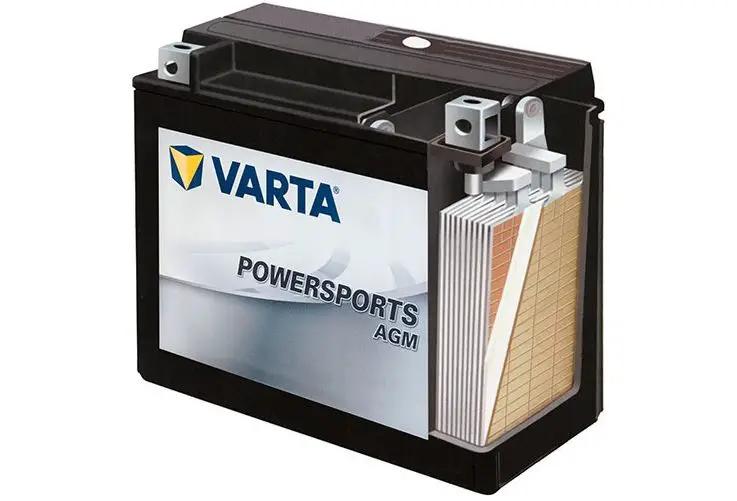
AGM (Absorbent Glass Mat) batteries are a type of lead-acid battery that is designed to provide reliable power and long-term performance.
They feature a unique design that allows them to be completely sealed and spill-proof. This makes them an ideal choice for vehicles exposed to extreme elements.
AGM batteries also feature a higher starting power than traditional lead-acid batteries, making them an excellent choice for cars that require a lot of starting power.
2. GEL Battery
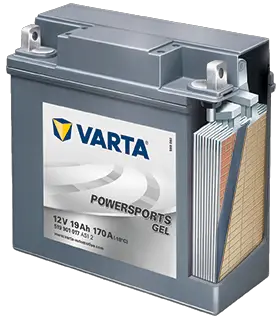
GEL batteries are a type of lead-acid battery that is designed to provide long-term performance and reliability.
They feature a unique gel-like electrolyte that helps to reduce sulfation and improve battery life. GEL batteries also feature a thicker plate construction, improving power delivery and overall performance.
GEL batteries have a lower power capacity than traditional lead-acid batteries. They are not suitable to be used as starter batteries because of increased acid resistance. Additionally, GEL batteries do well in warmer environments with slow discharge rates.
Still, they do not perform well in below-freezing temperatures. If recharged incorrectly, GEL batteries can experience failure before the end of their life cycle.
The main difference between the 96R battery and a Gel battery is the electrolyte used. The 96R battery utilizes a specially formulated electrolyte to extend its life, while the Gel battery features a unique gel-like electrolyte that helps to reduce sulfation and improve battery life.
Additionally, the 96R battery has a thinner plate construction, while the Gel battery has a thicker plate construction that helps to improve power delivery and overall performance.
Finally, the Gel battery is designed to be maintenance-free, while the 96R battery requires more frequent maintenance.
3. SLA Battery
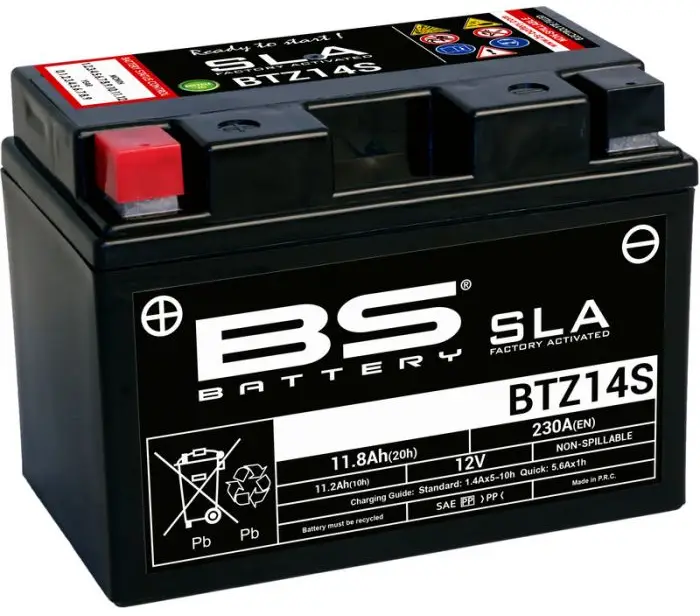
SLA (Sealed Lead Acid) batteries are a type of lead-acid battery that is designed to provide reliable power and long-term performance.
They feature a unique design that allows them to be completely sealed and spill-proof.
This video is a bit outdated (nearly eleven years old). Still, it gives you the service perspective on using an SLA battery:
These batteries are the splurge option on this list: if the pros interest you, the price is a non-factor. However, be aware that SLA batteries will be pricier, so if you’re looking for a low-budget replacement, this isn’t it!
The main difference between the 96R battery and an SLA battery is the type of construction. Again, the 96R is thinner than the SLA.
Additionally, the SLA battery is designed to be completely sealed and spill-proof, preventing the build-up of corrosion and extending battery life.
The 96R battery also utilizes a specially formulated electrolyte that helps to extend its life, while the SLA battery is designed to be maintenance-free, meaning they require minimal charging and maintenance.
Is It Safe To Replace a 96R With a Different Battery Type?

The short answer is yes: replacing a 96R with a different battery type is safe.
Car batteries aren’t universal or one-size-fits-all, though. Regarding car batteries, the 96R is one of the most common types used. It is a reliable and powerful battery designed to provide reliable power and long-term performance.
A few alternatives are available for those looking for something different. Before replacing a 96R battery with a different type of battery, you need to consider a few factors and determine what batteries are compatible with your vehicle.
Factors To Consider When Replacing a 96R Battery
First, ensuring that the new battery is compatible with your vehicle is important. Different battery types require different voltage and amperage ratings, so ensure that the new battery will be compatible with your vehicle’s electrical system.
It is also vital that the new battery is designed for the same type of application as the 96R battery. This may seem like a no-brainer, but many do-it-yourself mechanics think that batteries are interchangeable.
While the concept of all batteries is the same, the importance of their capabilities is a necessary consideration. Make sure to replace your car battery with another car battery!
Finally, ensuring that the new battery is of the same size and capacity as the 96R battery is essential.
Finding the Right Battery for Your Vehicle
The best battery type for your vehicle is determined by several factors, including the type of vehicle, its age, and the type of application.
It is important to ensure that the battery you choose is compatible with your vehicle’s electrical system and is designed for the same type of application as the 96R battery.
To check that you choose the right battery type for your vehicle, it is crucial to do some research. You can start by looking at your vehicle’s owner’s manual to determine the recommended battery type.
You should also consult with a qualified mechanic or battery specialist to verify that the battery you choose is compatible with your vehicle.
Finally, it is vital to consider the pros and cons of different battery types to determine which is best for your specific needs. Of course, if you have an electric car or a super-powered truck, your needs will differ. Different batteries will provide different capabilities.
How To Replace Your Vehicle’s Battery
Before going forward, know it is our official recommendation to take your car and new battery into your local repair shop or auto mechanic to double-check that everything fits together well. Additionally, they’ll be the best people to replace your vehicle’s battery!
Replacing a car battery is a relatively easy process. Make sure your car is off for the duration, though! Also, it’s worth mentioning here that sometimes your battery doesn’t need a replacement but rather a jump start.
The first step is to remove the old battery from the vehicle, which can be done by disconnecting the negative and positive terminals and then removing the battery from its mount.
Once the old battery has been removed, the new battery should be installed in the same location.
The negative and positive terminals should then be connected to the new battery. Once the new battery is installed, it should be securely mounted, and the vehicle should be taken for a test drive to ensure that it is working properly.
